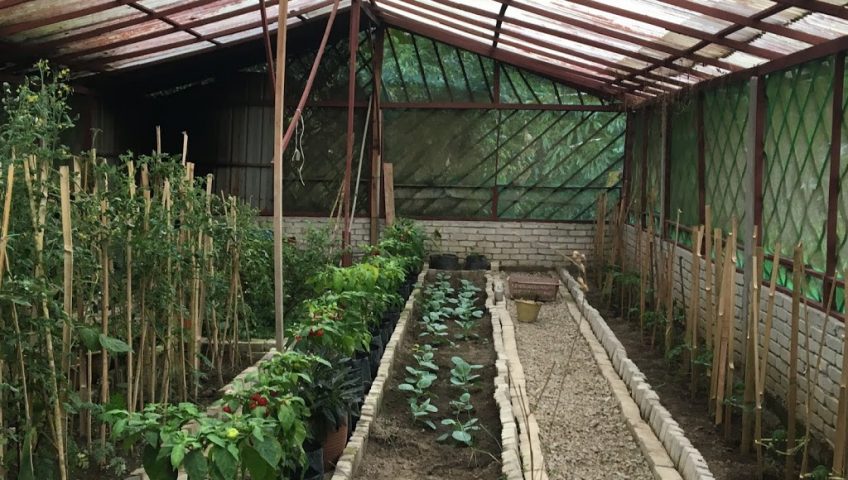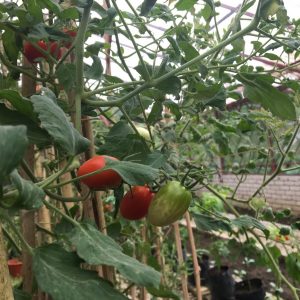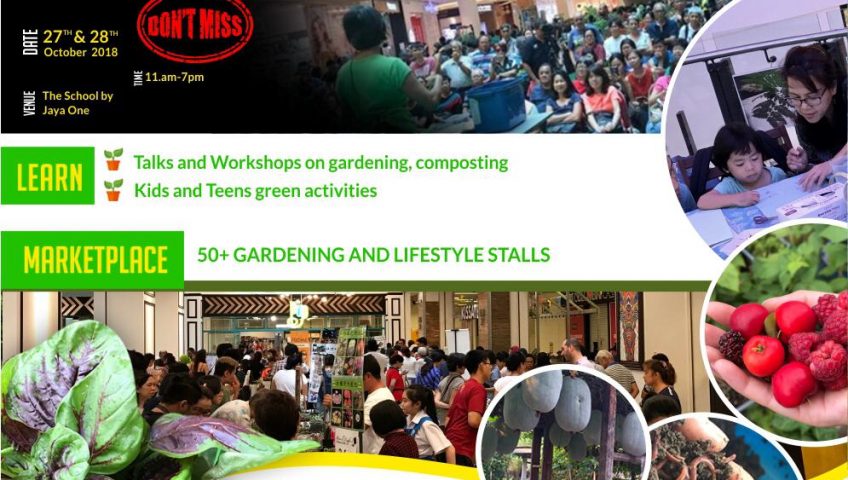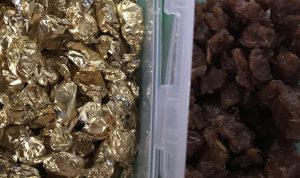
I love my whole farm but the one place that I spend a lot of time at is in my greenhouse. My
greenhouse is designed to serve as my seeding area, fertiliser production mix area, my lab to test out elements in growing plants such as water, pest control and fertilisers, an area to plant the plants that require substantial TLC, a place to propagate plants as well as acclimatisation of plants before being planted outdoors or indoors.
The roof is almost totally plastic roofing sheets (similar to the zinc roofing sheets) to allow sunlight in but keep the rain out hence it is where I can work rain or shine. The walls are half brick and specially-crafted lattice wood with netting to reduce the amount of pests that can enter the greenhouse. It is impossible to keep everything out as some are so tiny – almost like a speck of dirt size such as the whiteflies. It is half bricks because on some area along the sides, I have built a cement rack that serves as seed germination and seedling area as well as newly propagated plants area. Over the years, it has evolved from the simple design of 30 feet by 20 feet size to 60 feet by 20 feet and current setup. By starting from a simple design, it allowed me time to test and figure out how I wanted my greenhouse to be to suit with the activities as well as my style of working. It is a personal design space that I also enjoy relaxing in and getting oxygen therapy.


As all the plants at the farm either are edible or therapeutic or both, the same types are planted in the greenhouse. Working with my hands sometimes causes me to get cuts and nicks so I have my first aid plants in the greenhouse too. The Indian Borage, Variegated Borage and Aloe Vera are my basics. The borage with its antiseptic properties are great for cuts. I just wash the affected area and mash the leaves and apply to the cut. In a few minutes, it is taken care of and I can resume what I was doing. If I get an inflammation on my skin, I just get the above vera leaf and get the gel and apply. I also use the borage leaves to create an instant pest repellant by crushing the leaves in water and using the resulting liquid to spray on the plants. It also has anti-viral and anti-fungus properties to care for the health of my plants. Being non-toxic, I don’t have to worry about using protective gear. As I am creating the liquid, at the same time, I am also cleansing my hands from unwanted bacteria.
Both plants are easy to propagate. For the borage, I propagate from stem cuttings. The aloe vera produces its own platelets which I will transplant to a separate container. As I use them regularly, I propagate them often.
One of my favourite vegetable fruit is tomatoes. They require a lot of care both from a pest control, fertilisation and water when grown organically and free from hormones as well. It requires routine pest control activity as many pest love it like the whiteflies, aphids, black mold and ants to name a few. The pests encourage each other. With whiteflies, comes the aphids. Then come the black mold and the ants. Hence, it is imperative to control it from the beginning of the whiteflies. I mix my own fertiliser from base ingredients like chicken manure, goat manure, compost, eco enzyme (a.k.a. garbage enzyme) and EM-1. I tend to mix them depending on the growth and condition of the plant as having the fertiliser production mix are in the greenhouse, it makes it easier for me to get it done.



Currently I have 3 varieties in various stages growing: Hybrid tomatoes, Cherry tomatoes and Heirloom tomatoes. Although I have grown the hybrid and cherry tomatoes side by side, I planted the heirloom tomatoes separately in their own bed, separated by another planting bed as well as walkway. I intend to save the seeds from the heirloom tomatoes in my seed bank. These plants need to have their soil topped-up to cover their roots every so often so having my planting soil mixture area in the greenhouse also makes it convenient. I will not plant them outside as then they will be exposed to many more pests including birds and my free-range chickens. I have tried planting them outdoors but have always lost to the birds, chickens and other pests.

I also do companion planting in the greenhouse hence I also have various types of chilli plants in the greenhouse. Although I do not eat much chillies, there are many around me who do. I have a few varieties planted including habaneros, thai chilli and cili api. I have the habaneros in a row but have the others planted in polybags in different sections of the greenhouse. These plants also are a favourite of the whiteflies so whenever I do my pest control spray, I spray them at the same time too. They also need to be fertilised rather frequently – once a week – so having them in the greenhouse also reduces time for fertilisation as I also custom fertilise them depending on the stage and any problems that I see with them.
I tend to spend hours at a time in the greenhouse so I also plant some ulam for me to munch on as
snacks. One of my favourite plants – not only for taste but also because I think it is beautiful – is the Sambung Nyawa Batik. I plant them in containers in a few locations. Whenever I feel like munching on something, I just get a few leaves, rinse them and munch. They are easy to propagate and with proper care, are vigorous growers.
The story of the plants in the greenhouse continues in Part 2.














 should have this plant in their home. This is a hardy plant that is easy to grow and care for. It does require sunlight hence it will not do well in a shaded area. It can grow in partial shade but does well in full sun. However, you can plant it indoors and take it our every few days to allow it to sunbathe. It can be propagated from stem cuttings and rooted either in water or in soil. The stem and leaves have a high water content making it easy to extract a juice out of it. By this same token, I suggest if you plant it and want to consume it, do plant it organically.
should have this plant in their home. This is a hardy plant that is easy to grow and care for. It does require sunlight hence it will not do well in a shaded area. It can grow in partial shade but does well in full sun. However, you can plant it indoors and take it our every few days to allow it to sunbathe. It can be propagated from stem cuttings and rooted either in water or in soil. The stem and leaves have a high water content making it easy to extract a juice out of it. By this same token, I suggest if you plant it and want to consume it, do plant it organically.

 steep the chopped fresh leaves and when the temperature of the water is warm, I add the calamansi juice and honey. I drink it a couple of times a day.
steep the chopped fresh leaves and when the temperature of the water is warm, I add the calamansi juice and honey. I drink it a couple of times a day.
 We will be participating in the Go-Go Green event at The School@Jaya One, Petaling Jaya. We will have all our available products as well as available fresh produce and plants for sale at this event. For any enquiries or bookings, please whatsApp to 017-2821219. Thank you.
We will be participating in the Go-Go Green event at The School@Jaya One, Petaling Jaya. We will have all our available products as well as available fresh produce and plants for sale at this event. For any enquiries or bookings, please whatsApp to 017-2821219. Thank you.














